28th Jul 2021
View Post
I handcraft our twig-cast designs in five main materials: 14K gold, 18K gold, platinum, palladium, and sterling silver. Each of these 100% recycled metals has a unique composition of elements that are responsible for their specific properties such as hardness, luster, and color.
Depending on the desired color and durability of your nature-inspired jewelry, you can find the material that fits your unique lifestyle. Below is a comparison guide to our golds, platinum, palladium, and silver so you can discover what's the best metal for your jewelry.
FIND YOUR COLOR
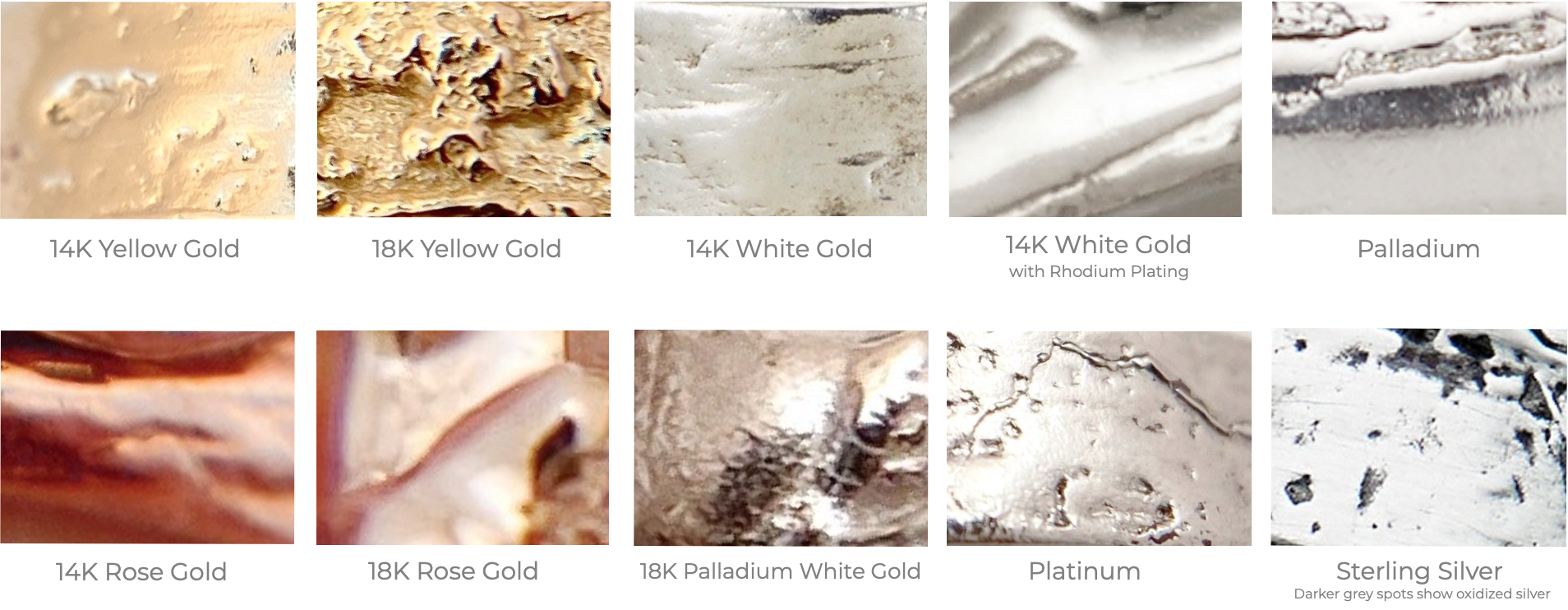
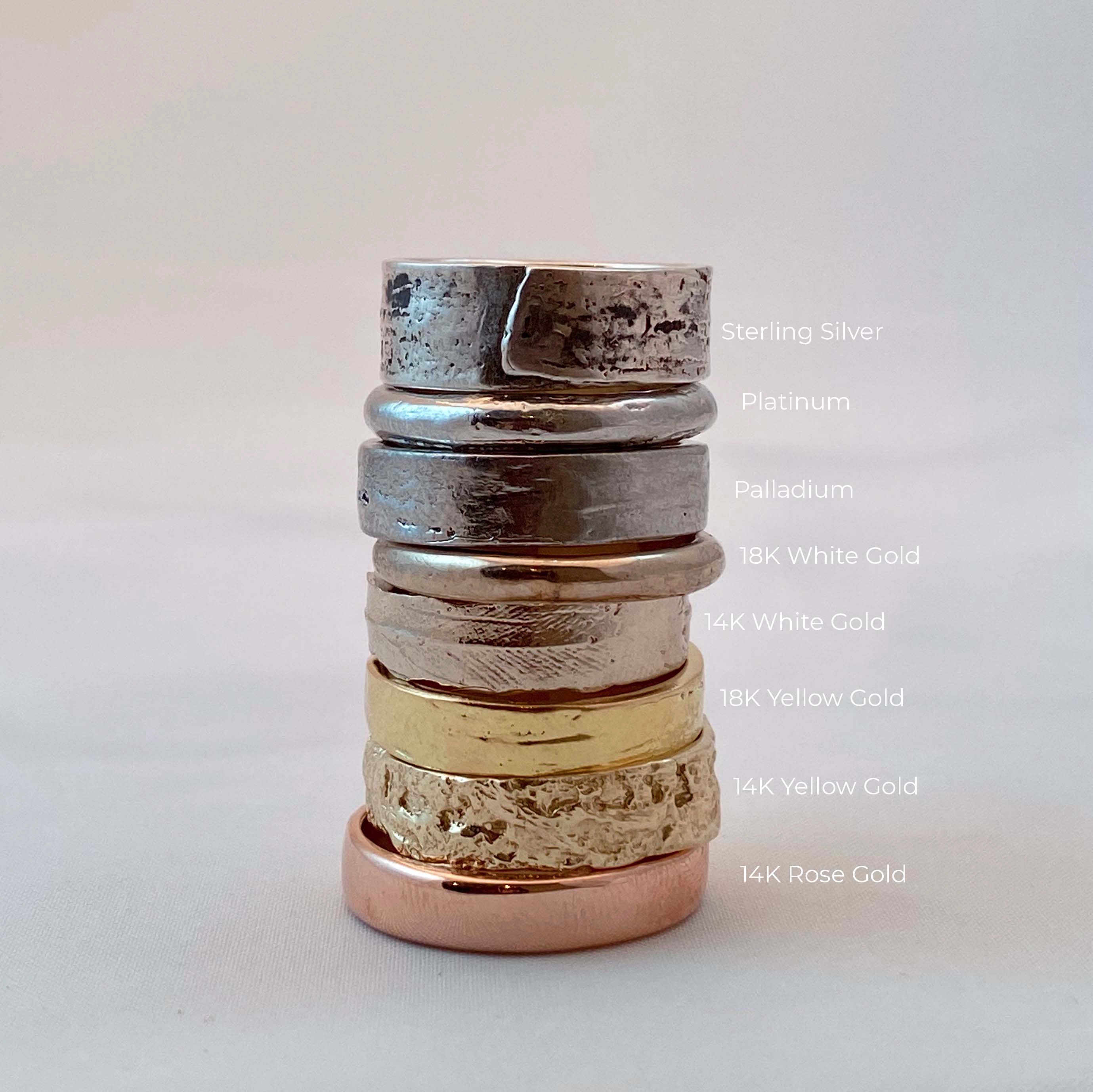

Each metal has a different undertone and saturation level that will complement your skin tone and the gemstone of your choice in different ways.
18K YELLOW GOLD
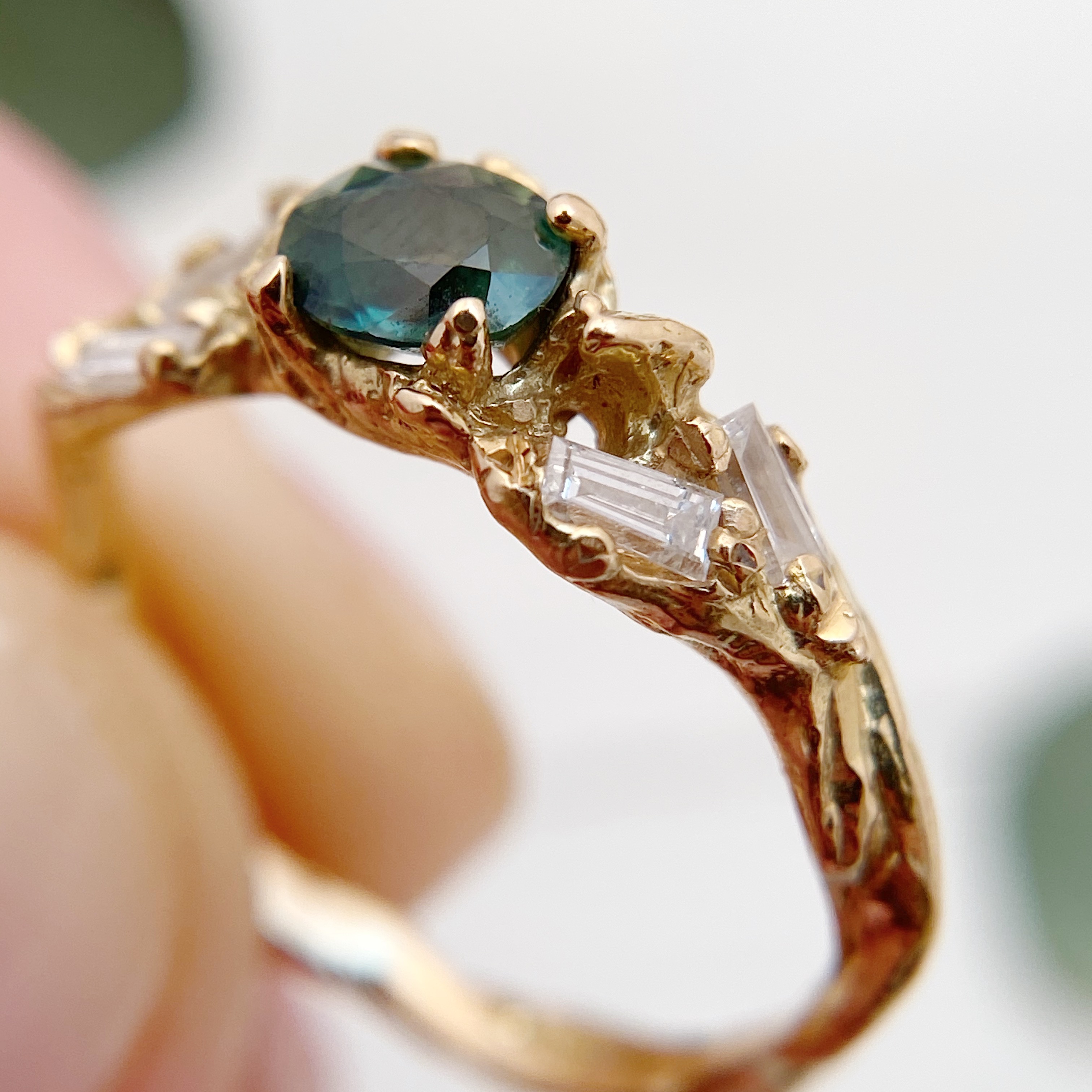
Composition: 75.50% Gold, 15% Silver, 9.50% Copper
Hardness: 2.75 (Moh's Scale) Advantages: Rich yellow-gold color, Hypoallergenic
Disadvantages: Prone to scratches/dents
Since there is no nickel in 18K gold, it is less likely to cause skin irritation than other golds. It also has a brighter yellow-gold color than 14K gold, but the higher purity of the gold makes it soft and susceptible to scratches, dents, and cracks during rough activities.
18K PALLADIUM WHITE GOLD
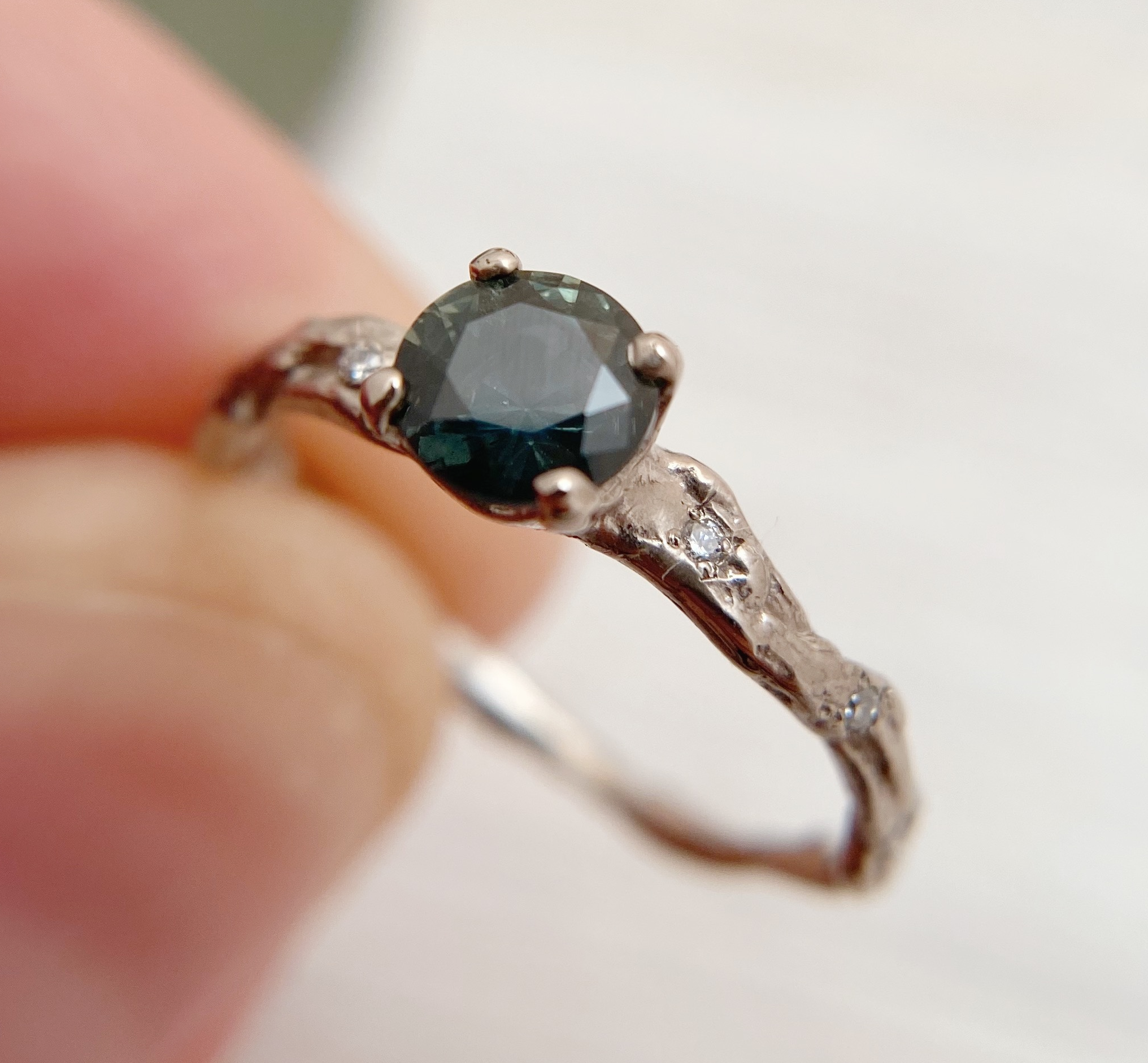
Composition: 75.50% Gold, 0.75% Silver, 14.5% Copper, 3.5% Zinc, 5.75% Palladium
Hardness: 2.75 (Moh's Scale) Advantages: Less tarnishing, Hypoallergenic
Disadvantages: Prone to scratches/dents, Warm Grey Hue
18K gold's higher gold and palladium content means there will be less oxidation and therefore the white color will be brighter for longer than 14K gold. However, the palladium gives the gold a warm grey hue that will not match with bright white palladium jewelry, and its higher gold percentage also makes it softer and more prone to scratches.
18K ROSE GOLD
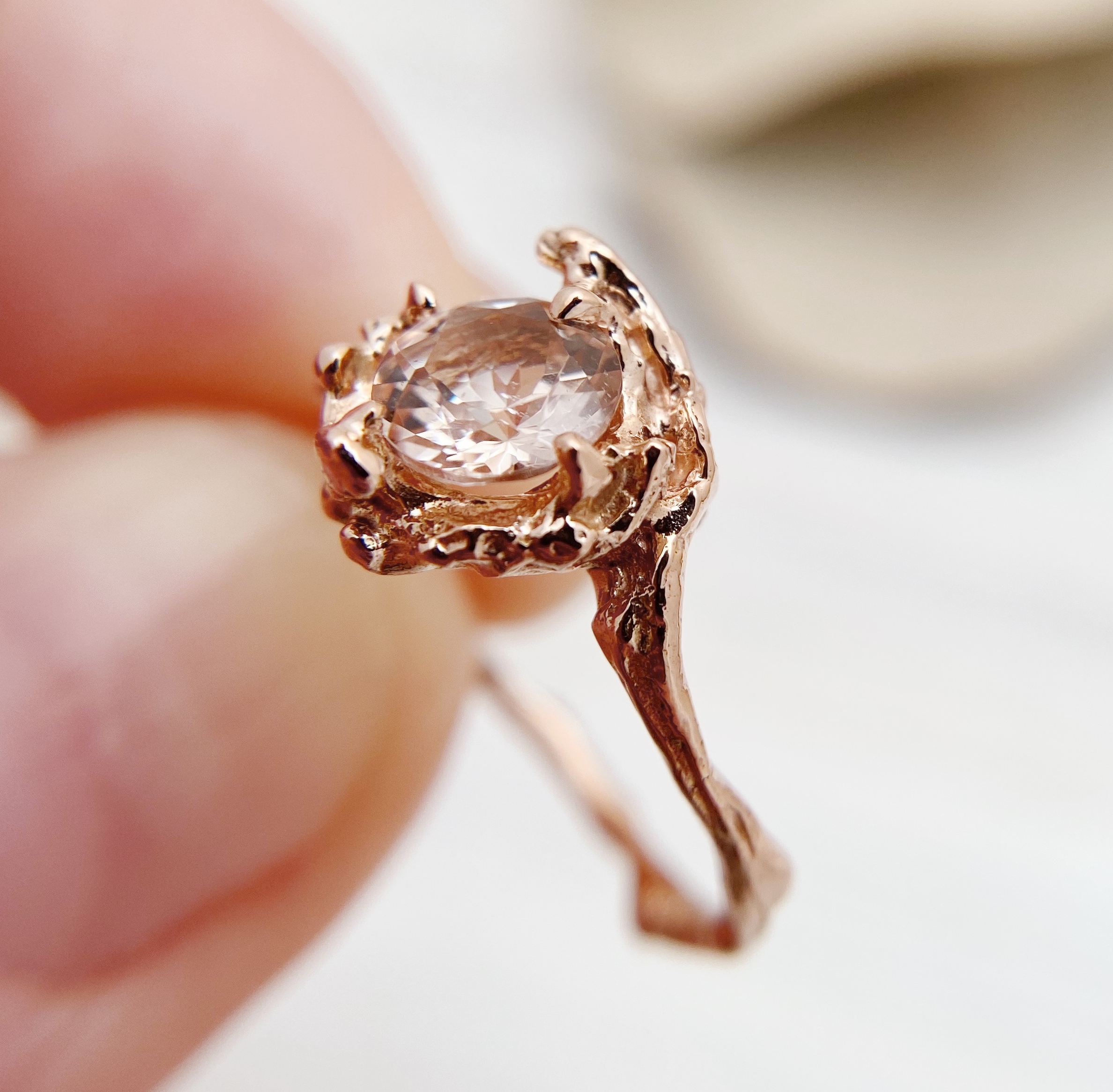
Composition: 75.50% Gold, 1% Silver, 22.25% Copper, 1.25% Zinc
Hardness: 2.75 (Moh's Scale) Advantages: Pale pink color, Hypoallergenic
Disadvantages: Prone to scratches/dents
Due to a lower copper percentage, 18K rose gold is lighter than 14K gold and therefore has a a less saturated orangey appearance; however, the color is entirely up to your own personal preference. Additionally,18K rose gold is relatively soft and can be scratched and scuffed more easily than 14K gold.
14K YELLOW GOLD
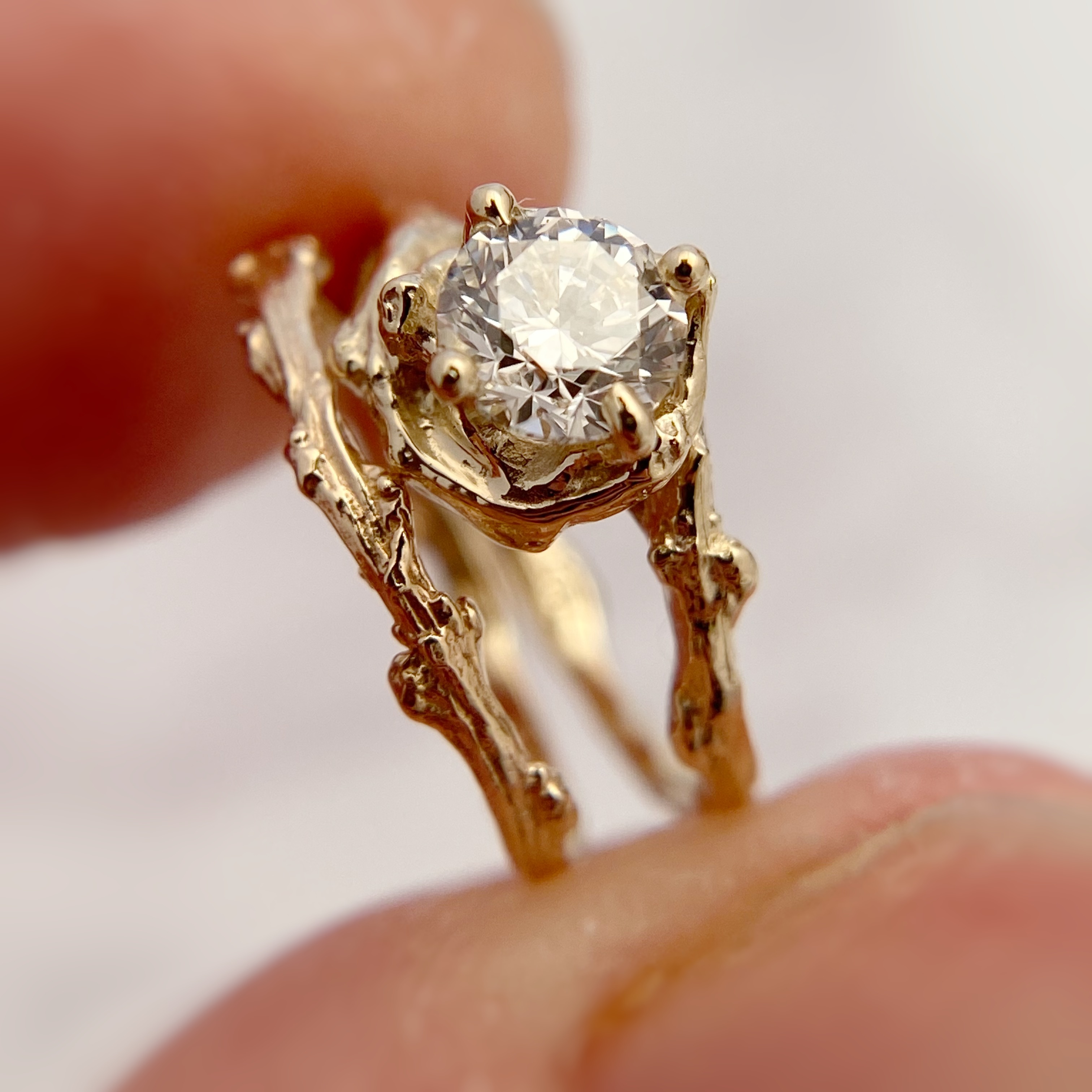
Composition: 58.50% Gold, 5% Silver, 31.25% Copper, 5.25% Zinc
Hardness: 3-4 (Moh's Scale) Advantages: Durable, Hypoallergenic Disadvantages: Fainter gold color
14K gold accounts for roughly 90% of all gold engagement and wedding rings because of its good durability and bright light gold color. Its less saturated gold color is perfect if you are concerned about an overly-yellow appearance.
14K WHITE GOLD

Composition: 58.50% Gold, 23% Silver, 9% Zinc, 9.50% Nickel
Hardness: 3-4 (Moh's Scale) Advantages: Durable Disadvantages: Yellowish undertone, Possible skin irritation
14K white gold is the most durable out of the 14K golds because of its high percentage of nickel, however, this quality also gives it a higher chance of skin irritation. If you areallergic to nickel, opt for a nickel-free gold such as 14K yellow gold, 14K rose gold, and 18K yellow gold.
14K WHITE GOLD WITH RHODIUM PLATING
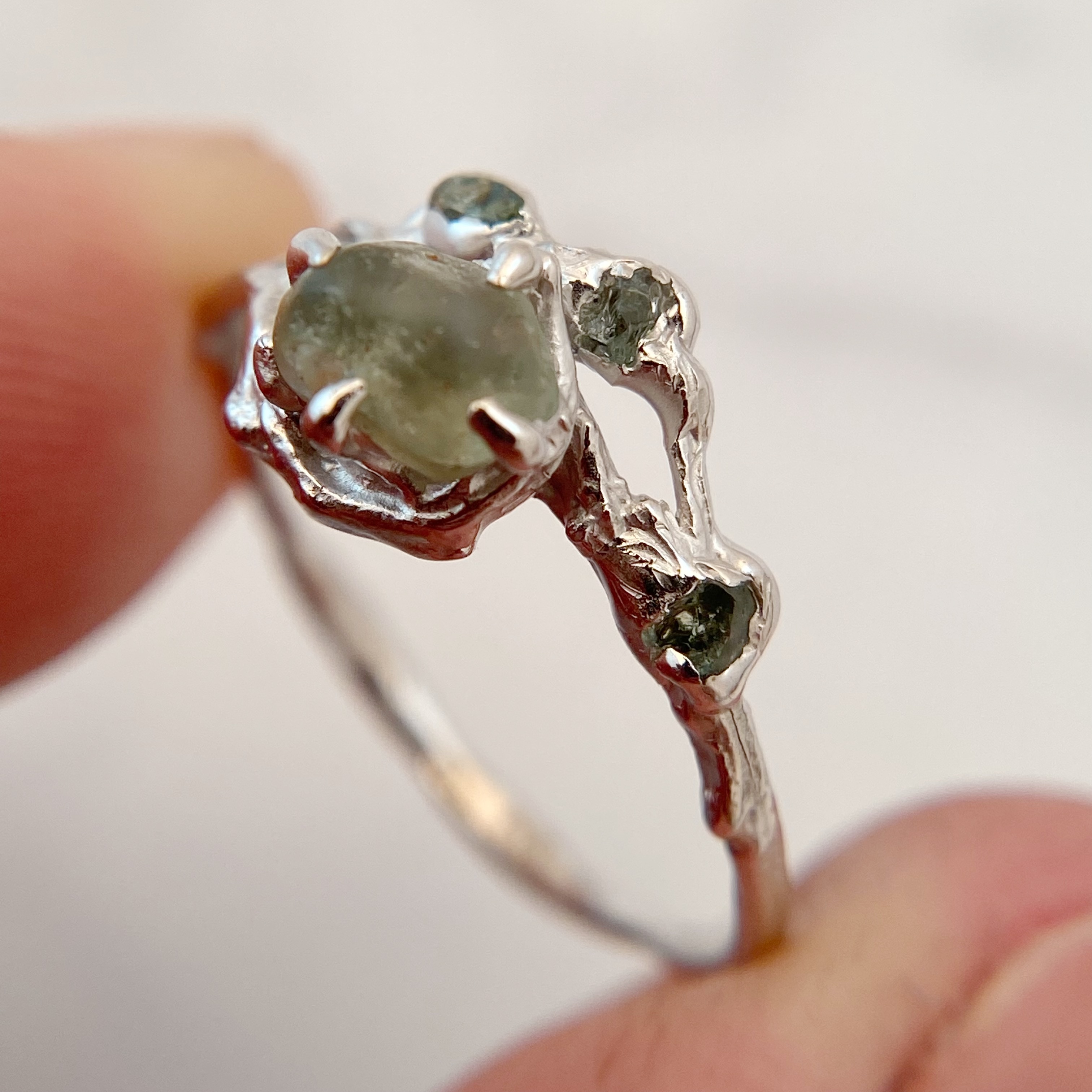
Composition: 58.50% Gold, 23% Silver, 9% Zinc, 9.50% Nickel
Hardness: 3-4 (Moh's Scale) Advantages: Durable Disadvantages: Re-plating Rhodium, Possible skin irritation.
14K white gold rings are plated in Rhodium in order to increase their whiteness, shine, and durability. With time, this plating wears off and the gold undertones come through. It has to be redone every 1-3 years to maintain a bright white shine, however this process is inexpensive and most large jewelers will do it for free.
14K ROSE GOLD
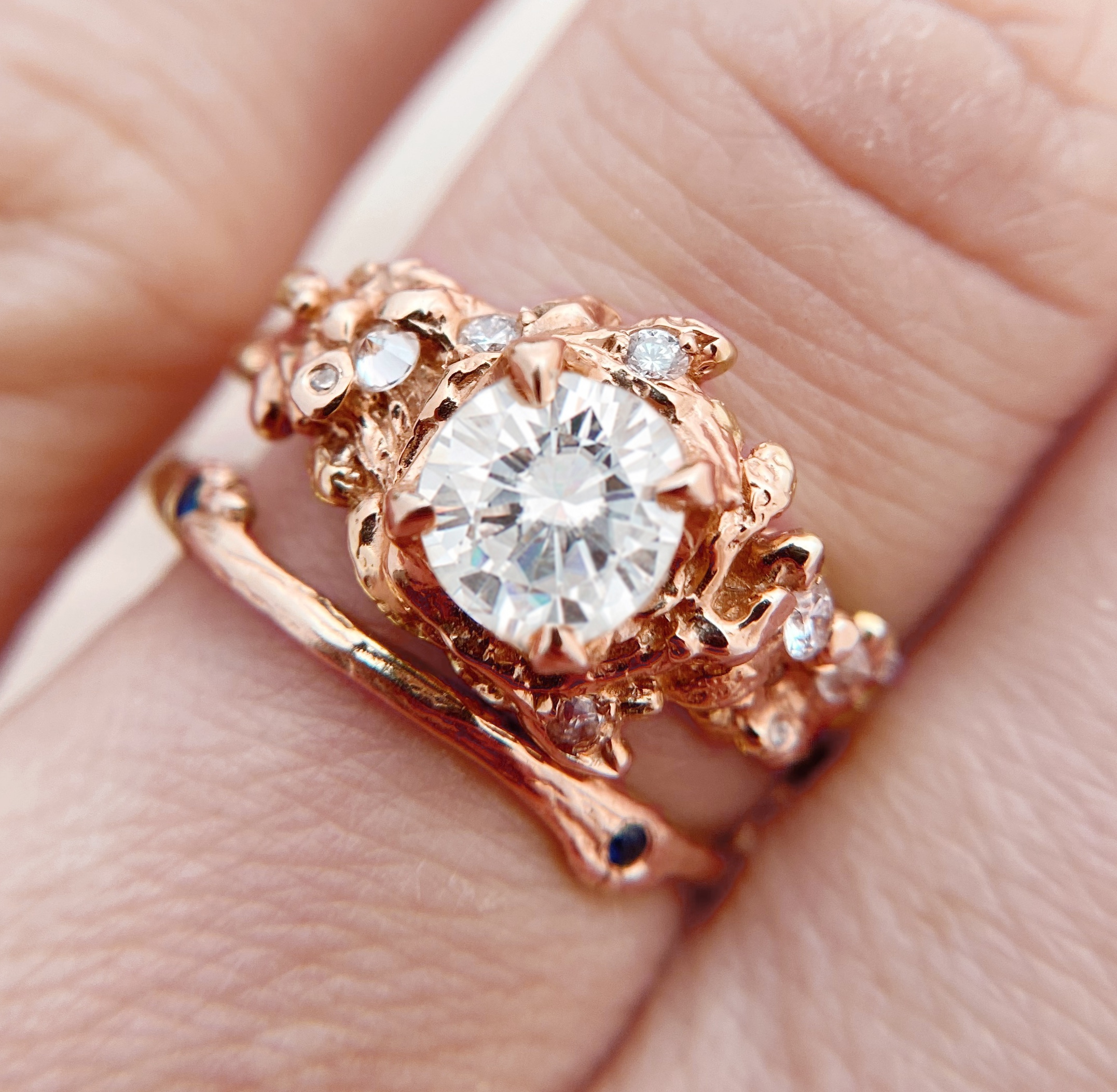
Composition: 58.50% gold, 1% silver, 39.50% copper, 1% Zinc
Hardness: 3-4 (Moh's Scale) Advantages: Durable, Hypoallergenic Disadvantages: Darker pink than 18K rose gold
14K rose gold is a much deeper pink than 18K rose gold with more orangey undertones. It is fairly durable and does not contain any skin-irritating nickel. Rose gold does not tarnish but it may does slightly darker over the years which is a normal process and should be expected.
PLATINUM
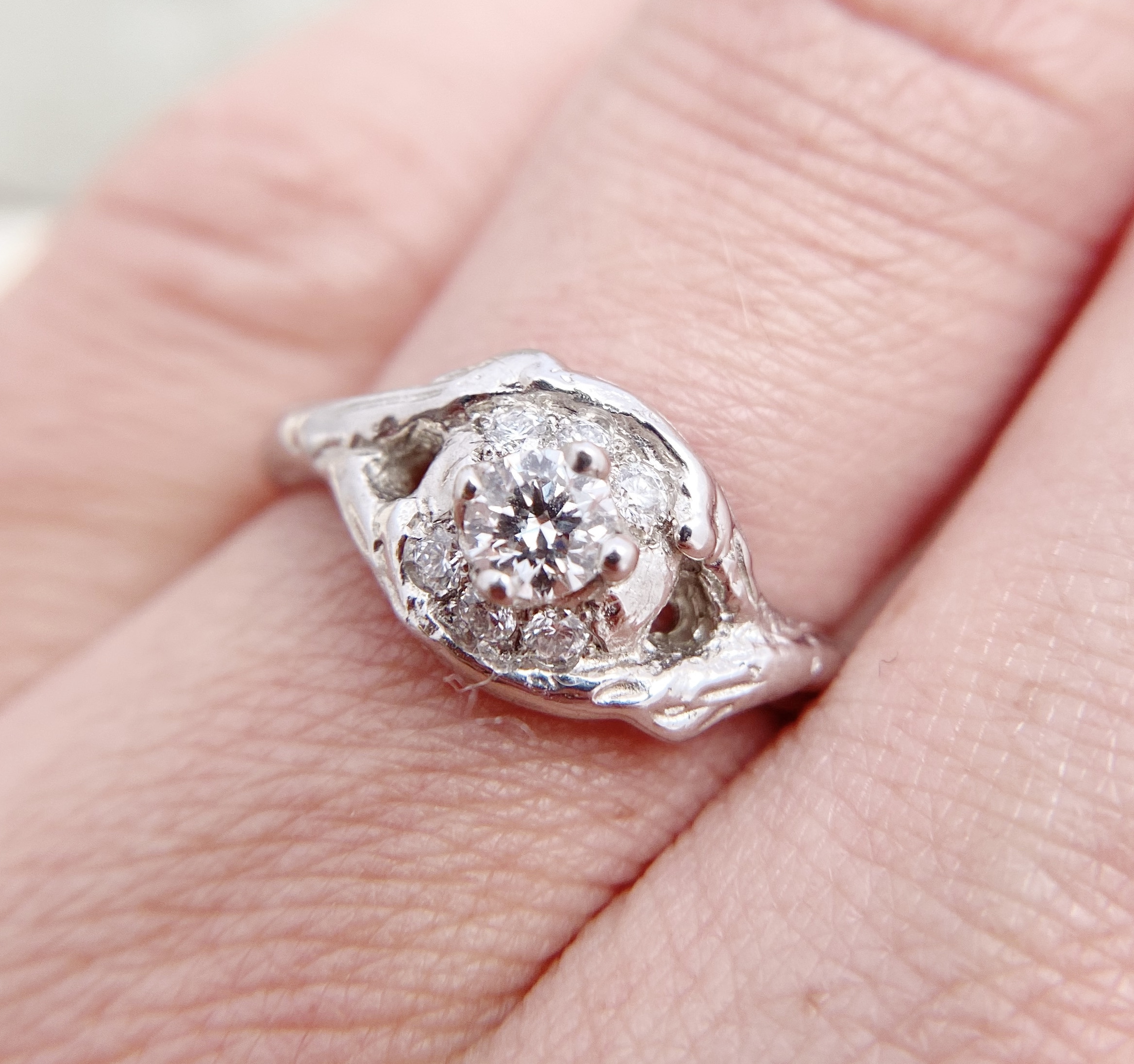
Composition: 95% Platinum, 5% Ruthenium
Hardness: 4.5 (Moh's Scale) Advantages: Durable, Hypoallergenic, Non-Tarnish Disadvantages: Expensive
Platinum is known for its high density, making it heavy and better equip for holding engravings and shape. It also maintains its light grey color indefinitely and is less likely to be damaged by household chemicals than other metals.
PALLADIUM
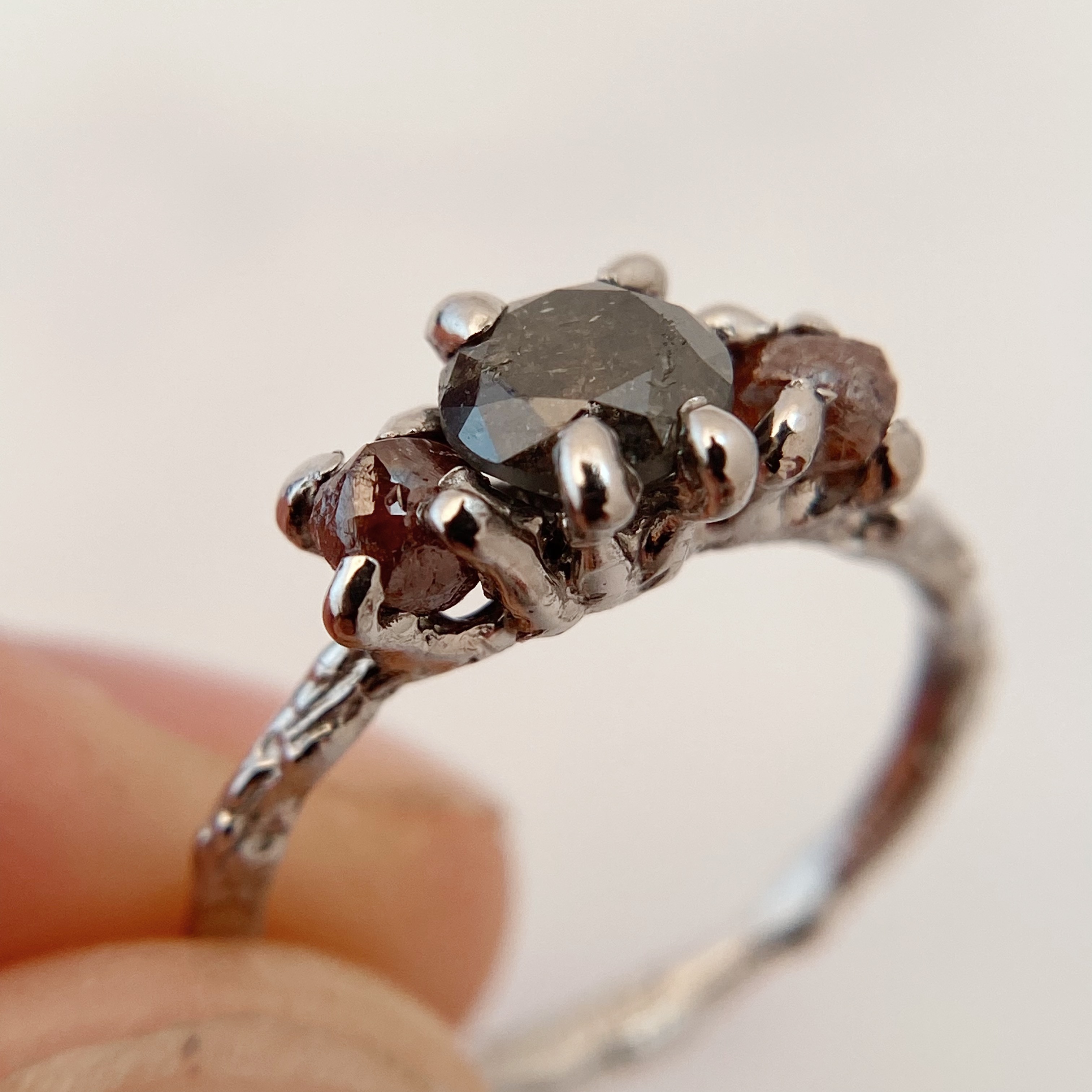
Composition: 95% Palladium, 5% Ruthenium
Hardness: 5.75 (Moh's Scale) Advantages: Durable, Hypoallergenic, Non-Tarnish Disadvantages: Expensive
Palladium is more affordable and a lighter white than platinum, while still being very durable due to its higher hardness rating. It also has a natural white color which means it will not tarnish and will remain a bright white over the years.
STERLING SILVER
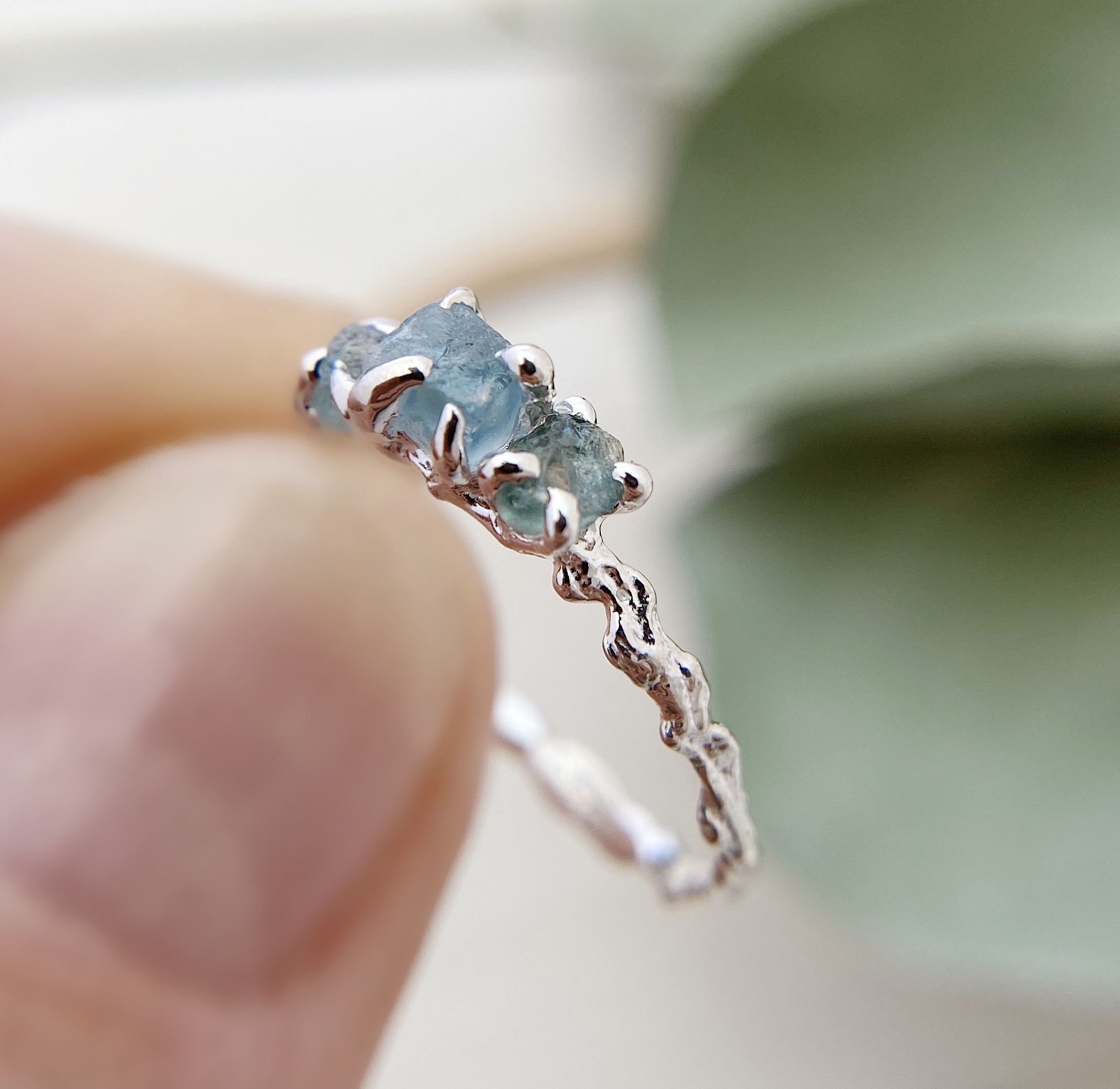
Composition: 92.5% Silver, 7.5% Copper
Hardness: 2.5 (Moh's Scale) Advantages: Affordable, Hypoallergenic Disadvantages: Very prone to scratches/dents
Sterling silver is very soft, making it ill equip for setting diamonds and other extremely hard stones. It is likely to bend slightly over time to align with the curvature of your finger and does not hold texture well.
14K YELLOW GOLD VS. 18K YELLOW GOLD
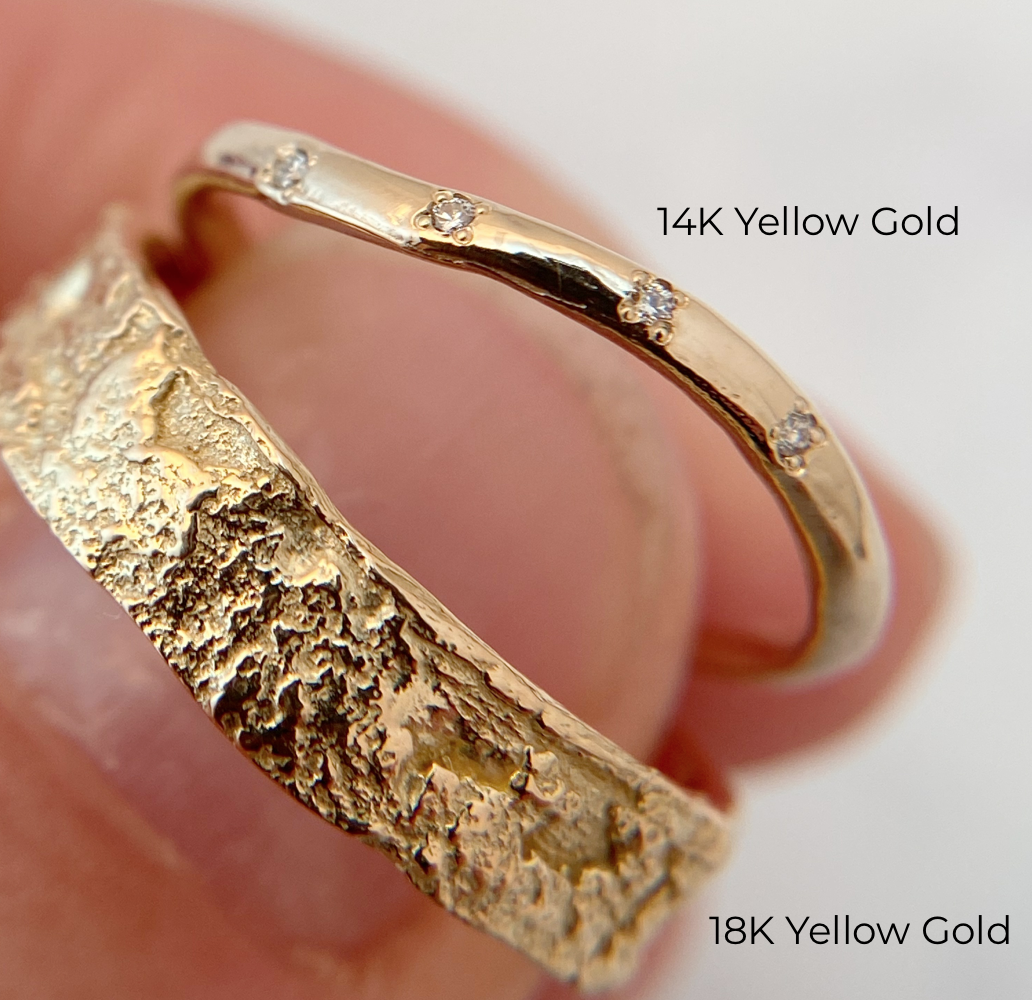
A side by side comparison of 14K versus 18K yellow gold. 14K gold is 1 point on Moh's hardness scale higher than 18K gold, making it more durable and less prone to scuffs and dents. However, as you can see in the photo, the colors differ and depending on your personal preference, either gold may be best for you.
14K WHITE GOLD WITH VS. WITHOUT RHODIUM PLATING
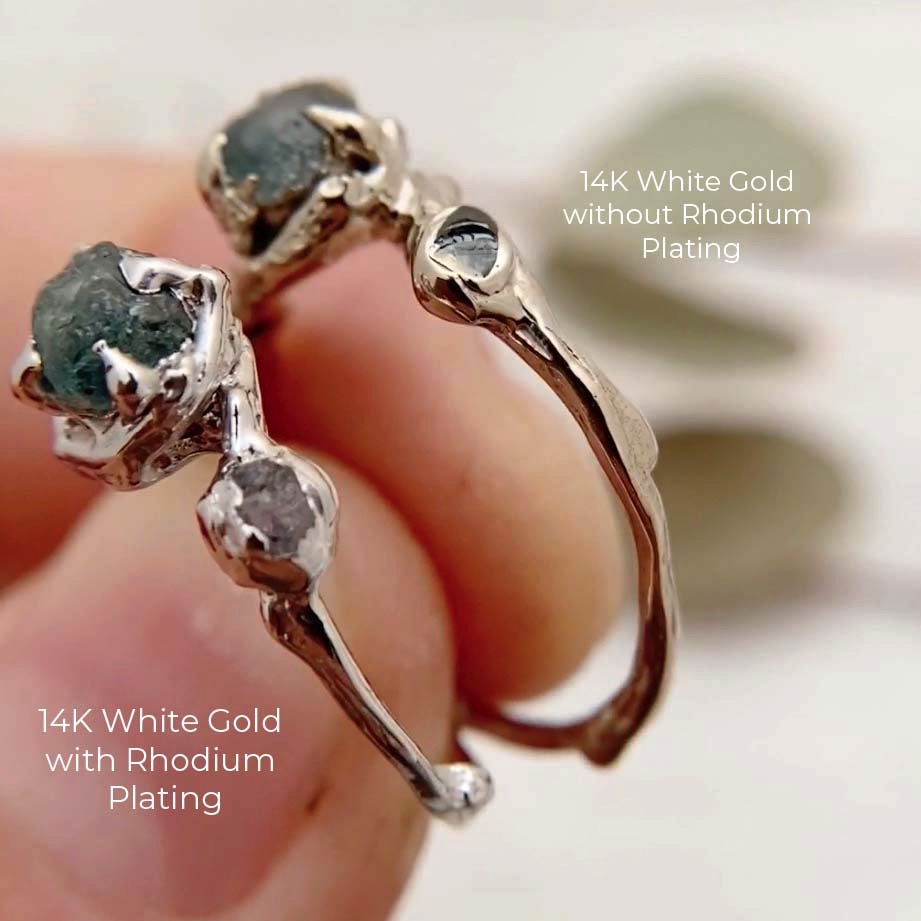
A side by side comparison of 14K white gold with and without rhodium plating. Rhodium plating gives the gold a brighter white color (as you can see on the left), however this plating wears off and needs to be replaced every few years. This process is inexpensive and many jewelers do it for free.
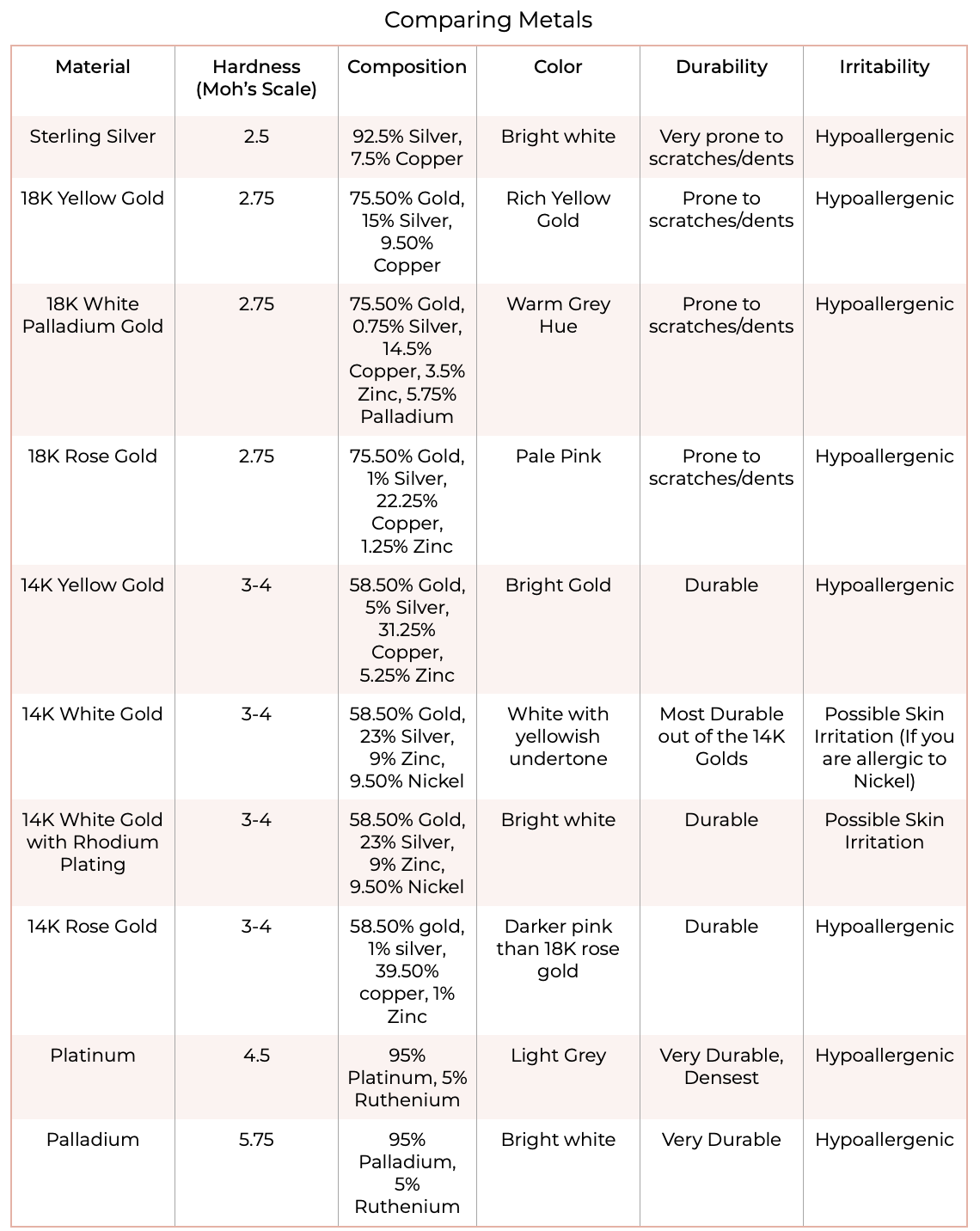
I hope this guide helps you discover the material that most closely matches the ring of your dreams and is also compatible with your day-to-day activities. If you would like to learn about the differences in care for each of these materials, please visit our Cleaning & Care Guide.
For any additional questions, don't hesitate to contact me.


